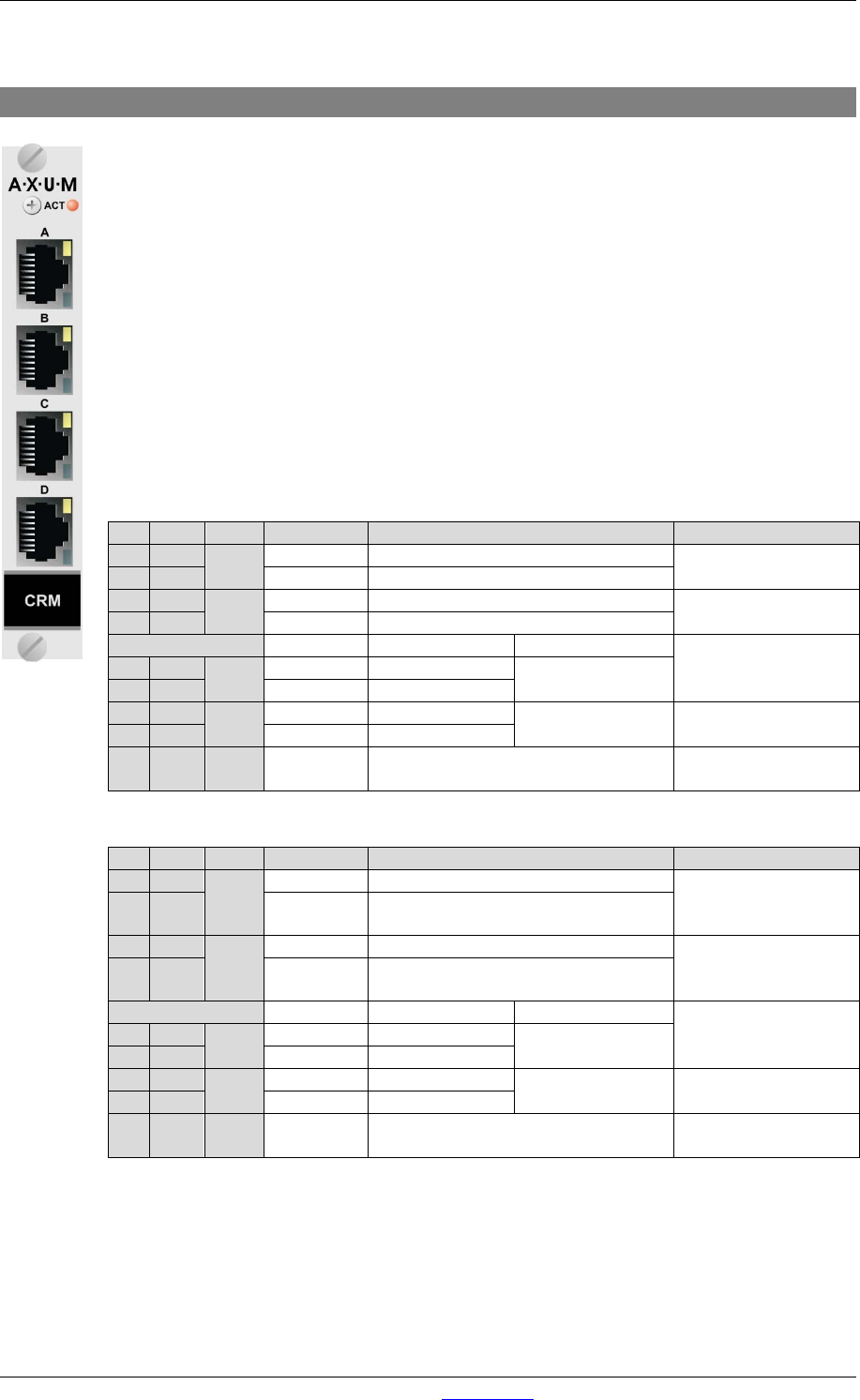User manual
Table Of Contents
- 1 Table of contents1 T
- 2 Package Contents
- 3 Introduction
- 4 System overview
- 5 Control Surfaces
- 6 AXUM Engine
- 6.1 Console 1-4 configuration
- 6.1.1 IP/Clock configuration
- 6.1.2 Global configuration
- 6.1.3 Mix buss configuration
- 6.1.4 Monitor buss configuration
- 6.1.5 Source configuration
- 6.1.6 Extern source configuration
- 6.1.7 Destination configuration
- 6.1.8 Talkback configuration
- 6.1.9 Processing presets
- 6.1.10 Module assignment
- 6.1.11 Module configuration
- 6.1.11.1 Module configuration page
- 6.1.11.2 Module preset 1A/1B, 2A/2B, 3A/3B, 4A/4B
- 6.1.11.3 Processing
- These are the programmed processing defaults for the modules. Depending on the startup settings these processing defaults will be used at startup (programmed defaults in global configuration).The field ‘Use at source select’ determines if the default module processing in the source configuration is used when a source is assigned via the module source select functionality and no processing preset is assigned in the ‘source configuration’.
- The following state/value processing sections are available:
- 6.1.11.4 Routing
- 6.1.11.5 Set module 1 to programmed startup state
- 6.1.12 Mix/monitor buss presets
- 6.1.13 Console presets
- 6.1.14 Surface configuration
- 6.1.15 Rack configuration
- 6.1.16 Source pools
- 6.1.17 Preset pools
- 6.1.18 Users
- 6.2 System configuration
- 6.1 Console 1-4 configuration
- 7 Surface(s) website
- 8 Block diagrams – Must be created
- 9 I/O Rack description
- 10 Available I/O rack cards
- 11 Patch panels
- 12 Specifications AXUM digital audio system
- 13 List Of Figures
- 14 List Of Tables
- 15 Declaration Of Conformity
- 16 Product Safety
- 17 Disclaimer
- 18 Appendix A - Network design for AXUM
- 19 Appendix B – Surface service
- 20 Appendix C – Engine functions

A·X·U·M User Manual Version 2.5 - 2011-01-28
AXUM from D&R - Phone: +31 294 418014 - E-Mail: info@d-r.nl - 72 -
10.5 CRM output card
There are four stereo outputs available on this card. RJ45 connector A&B represents the
CRM stereo line output. RJ45 connector C&D represents the stereo phones outputs.
Each RJ45 connector has also two GPIO’s which can be connected to the 19” patch
panels with a shielded twisted pair (STP) cable.
This stereo output card has some special functions:
- Analog level and mute functionality.
- Headphone amplifiers.
RJ45 A is stereo balanced output 1
RJ45 B is stereo balanced output 2
RJ45 C is stereo headphone output 3&4
RJ45 D is stereo headphone output 3&4
For each GPIO you can choose, by way of a hardware jumper on de board, between TTL
Input/Output or Photo-MOS relay output see chapter 11.3.1 GPIO TTL/Relay selection. For
software configuration see chapter 9.3 GPIO.
Table 10-5: CRM output RJ45 connection (A&B)
Table 10-6: Phones RJ45 connection (C&D)
Pin
Con.
Pair
Pin name
Function
Comment
1
1A
1
+Audio 1
Left line output in-phase
Imp. 56Ω
max. level +26dBu
2
1B
-Audio 1
Left line output out-phase
3
2A
2
+Audio 2
Right line output in-phase
Imp. 56Ω
max. level +26dBu
6
2B
-Audio 2
Right line output out-phase
If jumper TTL-GPIO If jumper GPO
see chapter 11.3.1
5
3A
3
GPIO1a
GP-Out (TTL)
Photo MOS relay
(max 50V, 200mA)
4
3B
GPIO1b
nGP-In (TTL)
7
4A
4
GPIO2a
GP-Out
(TTL)
Photo MOS relay
(max 50V, 200mA)
see chapter 11.3.1
8
4B
GPIO2b
nGP-In (TTL)
S GND S Shield GND
Audio ground and
reference for GP-In
Pin
Con.
Pair
Pin name
Function
Comment
1
1A
1
+Audio 1
Left phones 1 output
Imp. 5Ω
minimal phones imp.
32Ω
2 1B -Audio 1 Right phones 1 output
3
2A
2
+Audio 2
Left phones 2 output
Imp. 5Ω
minimal phones imp.
32Ω
6 2B -Audio 2 Right phones 2 output
If jumper TTL-GPIO If jumper GPO
see chapter 11.3.1
5
3A
3
GPIO1a
GP-Out (TTL)
Photo MOS relay
(max 50V, 200mA)
4
3B
GPIO1b
nGP-In (TTL)
7
4A
4
GPIO2a
GP-Out (TTL)
Photo MOS relay
(max 50V, 200mA)
see chapter 11.3.1
8
4B
GPIO2b
nGP-In (TTL)
S GND S Shield GND
Audio ground and
reference for GP-In










